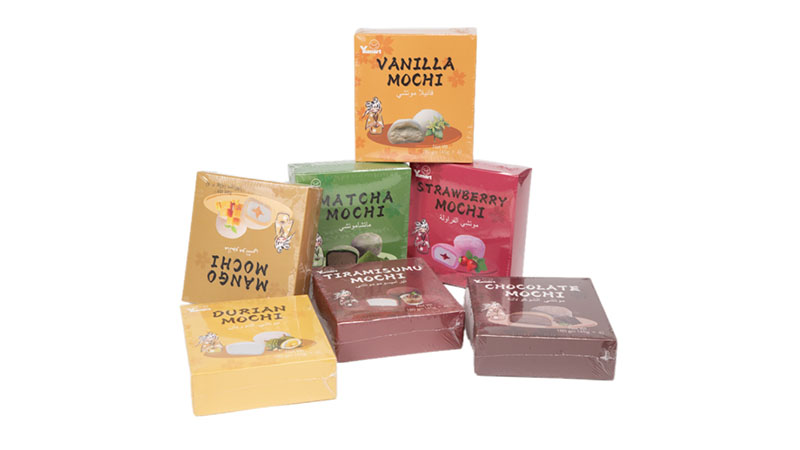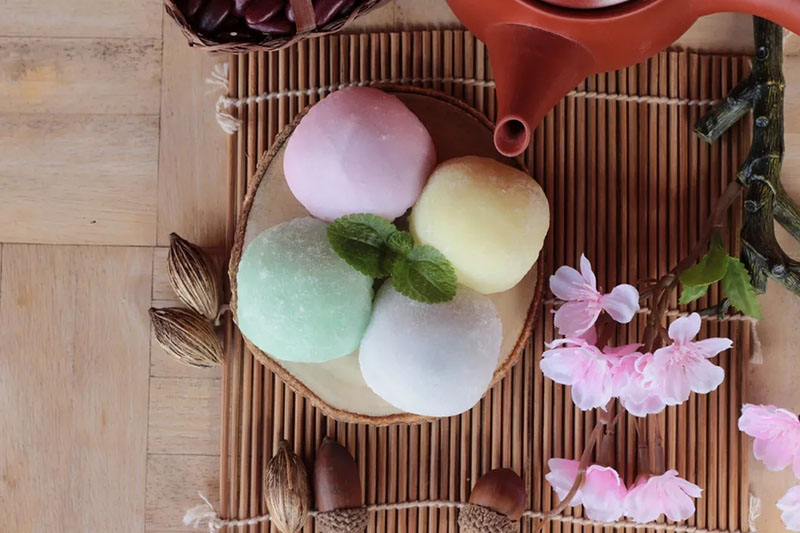In the dazzling world of cuisine, mochi has successfully won the hearts of countless food lovers with its unique texture and profound cultural heritage. Whether at the street food stalls or in high-end and elegant dessert shops, it can be seen everywhere. People may buy a portion casually on a busy afternoon to enjoy a moment of sweet comfort, or carefully place it on the dining table to share this delicious treat with family and friends. It has long since transcended being just a food and has become an indispensable sweet memory in people’s lives.
Mochi is a traditional Japanese and Chinese pastry, mainly made from glutinous rice flour or other starchy ingredients. Its appearance is round and cute, with a rich variety of colors. It can be pure white, or it can show bright colors by incorporating various ingredients, such as the fresh green of matcha flavor and the delicate pink of red bean flavor.

In terms of historical origin, mochi has a long history in Asia. In Japan, it is an important traditional food and often appears in various festivals and ceremonies. According to records, as early as the Jomon period, there were already foods similar to mochi in Japan. Initially, it was used as an offering to the gods. Over time, it gradually became a popular daily snack among the public. In China, mochi also has a deep cultural foundation. It has different names and production methods in different regions. For example, in Taiwan, mochi is a very popular local snack.
The production process of mochi is not complicated, but it is full of the inheritance of traditional craftsmanship. First, soak the glutinous rice for a period of time to allow it to absorb water fully, then steam it, and then repeatedly pound it to make the glutinous rice soft, glutinous, and resilient. The pounding process is the key to making mochi. It requires not only strength but also skills. Through continuous pounding, the structure of the glutinous rice is changed, resulting in a unique texture. In modern times, there are also some production tools that can replace manual pounding, but many traditional producers still insist on handmade production to preserve the purest taste.

There are various ways to eat mochi. You can eat it directly to taste its soft, glutinous, and sweet taste. You can also coat it with a layer of soybean powder, coconut shreds, or other favorite powders to increase the richness of the taste. Additionally, it can be filled with various fillings, such as red bean paste, black sesame, peanut butter, etc., creating a harmonious combination of sweet and savory flavors. In Japan, there is a mochi pastry called ‘sakura – mochi’, which is made of glutinous rice flour as the outer skin, filled with red bean paste, and wrapped with salt – pickled cherry leaves. It is not only delicious but also highly ornamental, full of the romantic atmosphere of spring. In China, there is also a way to eat mochi by deep – frying it. The outer skin is crispy, and the inside is soft and glutinous, presenting a unique flavor.
Today, with the exchange and integration of cultures, mochi is no longer limited to Asia but has gone global. In many international dessert shops and restaurants, mochi can be seen. With its unique texture and cute appearance, it attracts people from different cultural backgrounds. Whether as a tea snack, dessert, or street food, mochi, with its unique charm, occupies an important place on the stage of cuisine and has become a delicious messenger for people to convey emotions and share happiness.
Contact
Beijing Shipuller Co., Ltd.
WhatsApp: +86 136 8369 2063
Web: https://www.yumartfood.com/
Post time: Mar-15-2025